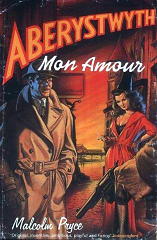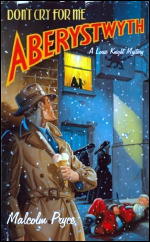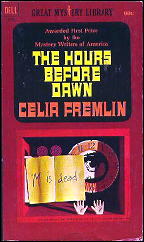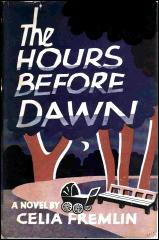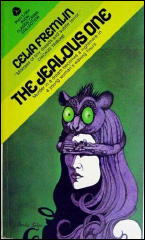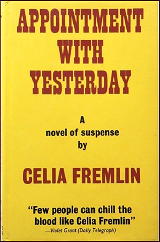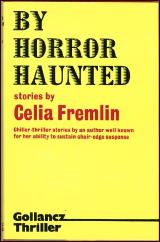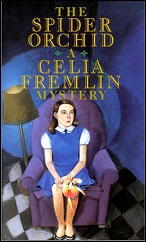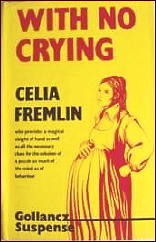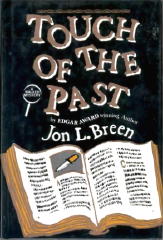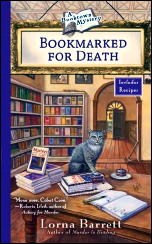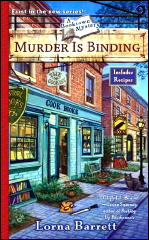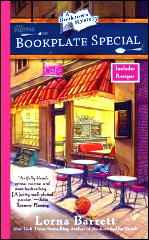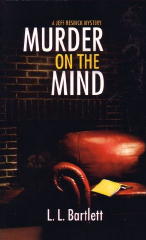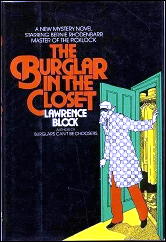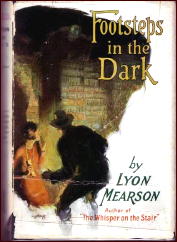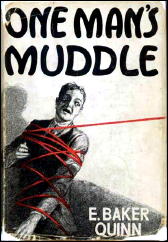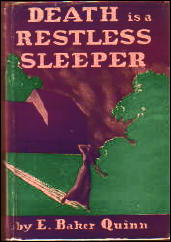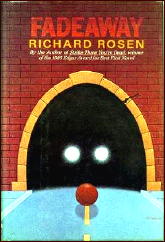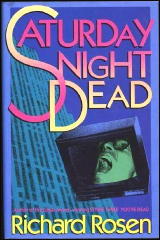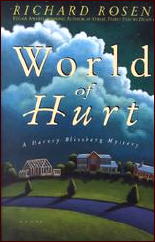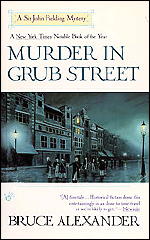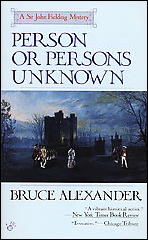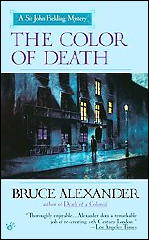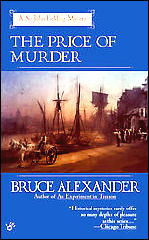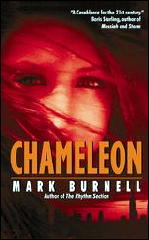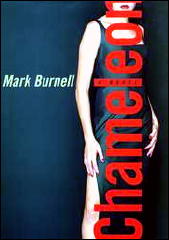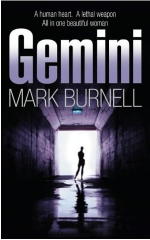BRUCE ALEXANDER – Rules of Engagement.
Berkley, paperback; 1st printing, February 2006. Hardcover edition: G. P. Putnam’s Sons, March 2005.
This is the first of Bruce Alexander’s “Sir John Fielding” detective novels that I’ve read, and no, I didn’t realize it until after I’d picked it out to read that this is also the last one that Alexander ever wrote. And as perhaps you already knew, Bruce Alexander was the pen name of Bruce Cook, 1932-2003, who wrote eleven mysteries under that name. Under his own name, he had five earlier ones, four of them with Antonio “Chico” Cervantes as the leading character.
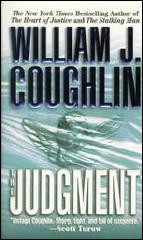
Now it gets interesting. (I’ll get back to Antonio “Chico” Cervantes in a minute.) Cook also was at least in part responsible for writing William J. Coughlin’s last book after he (Coughlin) died, The Judgment (St. Martin’s, 1997). I’m quoting from Al Hubin in Crime Fiction IV now: “Apparently written by Bruce Cook from a beginning by Coughlin, then finished and polished by widow Ruth Coughlin.”
The reason is that this is interesting, is that this is precisely how Rules of Engagement got written. From the back cover, and quoting again: “He (Bruce Cook) died in 2003, having completed most of Rules of Engagement, and left notes on how the rest of the story unfolded. John Shannon, author of the highly praised Jack Liffey series, most recently Dangerous Games, completed the novel with Bruce’s wife, Joan Alexander.”
As coincidences go, it would be rather minor, but was it a coincidence? Probably not. The idea was there, and the Bruce Cook and his wife simply carried it out in the same way it had been done before. And as you can easily imagine, there are both pluses and minuses in doing so.
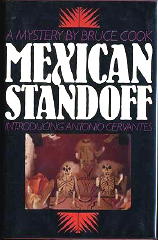
But before getting into that, and to Sir John Fielding and what the book (and the series) is about, I promised to tell you something about Chico Cervantes. This Thrilling Detective link will tell you more, but perhaps it suffices to say that Cervantes was a Mexican-American ex-LA cop turned private eye whose stomping grounds were (as you probably already guessed) Southern California.
His four recorded cases, published between 1988 and 1994, did not seem to turn the mystery fiction world on fire, and in fact, only one of the four, the first, Mexican Standoff, was ever published in paperback, the other three only in hardcover.
For whatever that tells you. In any case (no pun intended) the year the last Cervantes book came out, 1994, was the same year that Blind Justice, the first Sir John Fielding novel appeared. Cook, as Alexander, at the age of 62, had hit the equivalent of pay dirt.
I’ll append a complete list of the highly popular Fielding books at the end of this review. (I have them all. They are, unfortunately, still in the TBR (To Be Read) portion of the basement.)

Sir John Fielding, as I hasten now to tell you (at last), was the blind English magistrate who was the real-life founder of London’s first true police force, the Bow Street Runners, in the mid-to-late 1700s.
What’s interesting about one of Alexander’s Fielding books, An Experiment in Treason, Benjamin Franklin makes an appearance. Unlike Robert Lee Hall’s series of books of the latter’s London adventures, though, in Treason Franklin is a suspect, not the detective, while in Hall’s books, Fielding is only a (relatively) minor character.
In the books by Bruce Alexander, Fielding’s household and close-knit circle of friends and close acquaintances takes center stage, filled to abundance with family, servants, many of which (if not most) are fictional. Especial note should be made of the narrator of the tales, one Jeremy Proctor, Fielding’s protege with him throughout the series, an orphan taken under his wing as a dogsbody, now in Rules of Engagement all of eighteen and Sir John’s clerk at the Bow Street Court.
The title comes in part from the fact that Jeremy is engaged to be married to Clarissa Roundtree, the other orphan taken in by the Fieldings: Clarissa as Lady Fielding’s general factotum, and as the book begins, he (Jeremy) is beginning to wonder greatly about his future. (On page 241 there is another context in which “rules of engagement” come into play.)
The mystery is extremely slight, but of course it needs to be mentioned. It concerns the strange death of Lord Lammermoor, who has recently jumped to his death from a bridge while crossing the Thames alone.
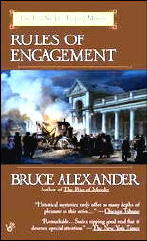
Several chapters later (or to be precise, in Chapter Three) the case is all but solved when Fielding and his entourage are entertained at the theater by a practitioner of “animal magnetism” and/or “mesmerism.” The only question that remains (to the reader, that is) is who is responsible, and while I cannot reveal his/her name, you will know as soon as he/she enters the story. (Ventriloquy is also an important factor, but my telling you that will neither enlighten you further, or less.)
One hopes for more, but more there is not, save 200 pages in which a great happens, but very little of any consequence. All in all, what the authors in combination have provided is nothing less than a worthy attempt to tie up some loose ends for the readers who followed the series and the characters from early on — but not all of them (the loose ends, that is). Life happens, and that is what is left for the reader to contemplate. This is one of the aforementioned pluses.
For someone expecting a detective story with some solid, down-to-earth detective work going on, either Mr. Alexander did not have one in mind, or if he did, neither his wife nor John Shannon were able to build one out of the notes that he left them. This is one of the aforementioned minuses.
For the record, the pluses outweigh the minuses, but personally, coming in at the end as I did, I left with a feeling of disappointment that I sincerely wished I hadn’t — come in at the end, that is.
If you’d like to call my verdict “mixed,” you’d certainly be right. I wouldn’t deny it at all.
— March 2006
The Sir John Fielding novels by Bruce Alexander:
All were published in hardcover by Putnam and in paperback by Berkley. The dates are of the hardcover editions; the paperback generally appeared a year later.
Blind Justice. 1994.
Murder in Grub Street. 1995.
Watery Grave. 1996.
Person or Persons Unknown. 1997.
Jack, Knave and Fool. 1998.
Death of a Colonial. 1999.
The Color of Death. 2000.
Smuggler’s Moon. 2001.
An Experiment in Treason. 2002.
The Price of Murder. 2003.
Rules of Engagement. 2005.
